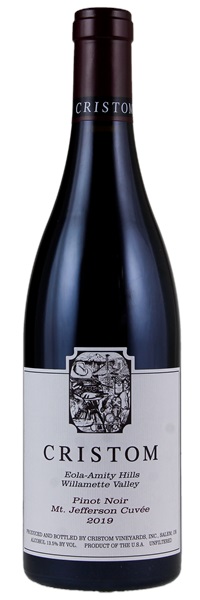Estimate

This is very seductive on the nose with ripe strawberry, spice, flowers and hints of cloves. Full-bodied, but very reserved and tight with chewy, polished tannins and a long, long finish. Racy and structured.
...savory cranberry sauce, orange peel and tar aromas with tones of dried flowers and spice. The medium-bodied palate offers the pleasing, gently grippy tannins and bright freshness characteristic of Cristom's generous whole-cluster inclusion, and it finishes with intense, layered fruits and floral accents.
Offers a dynamic core of lively tannin and acidity framed by raspberry and pomegranate flavors that take on black tea and dark spice accents.
...cranberry and wild raspberry fruit at the core...peppery character and green tea highlights in the finishing tannins.